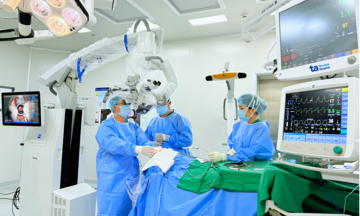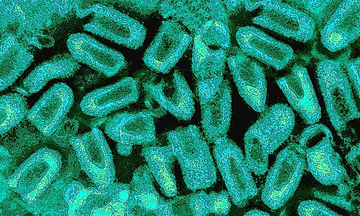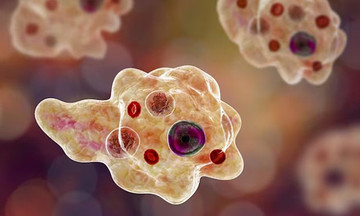A CT scan with 1975 slices at Tam Anh General Hospital in Ho Chi Minh City revealed a hidden tumor in the upper calyx of Mr. Khang's right kidney. Doctors performed a cystoscopy, ureteroscopy, and kidney biopsy, which confirmed urothelial cancer (also known as transitional cell carcinoma). This type of cancer affects the lining of the urinary tract.
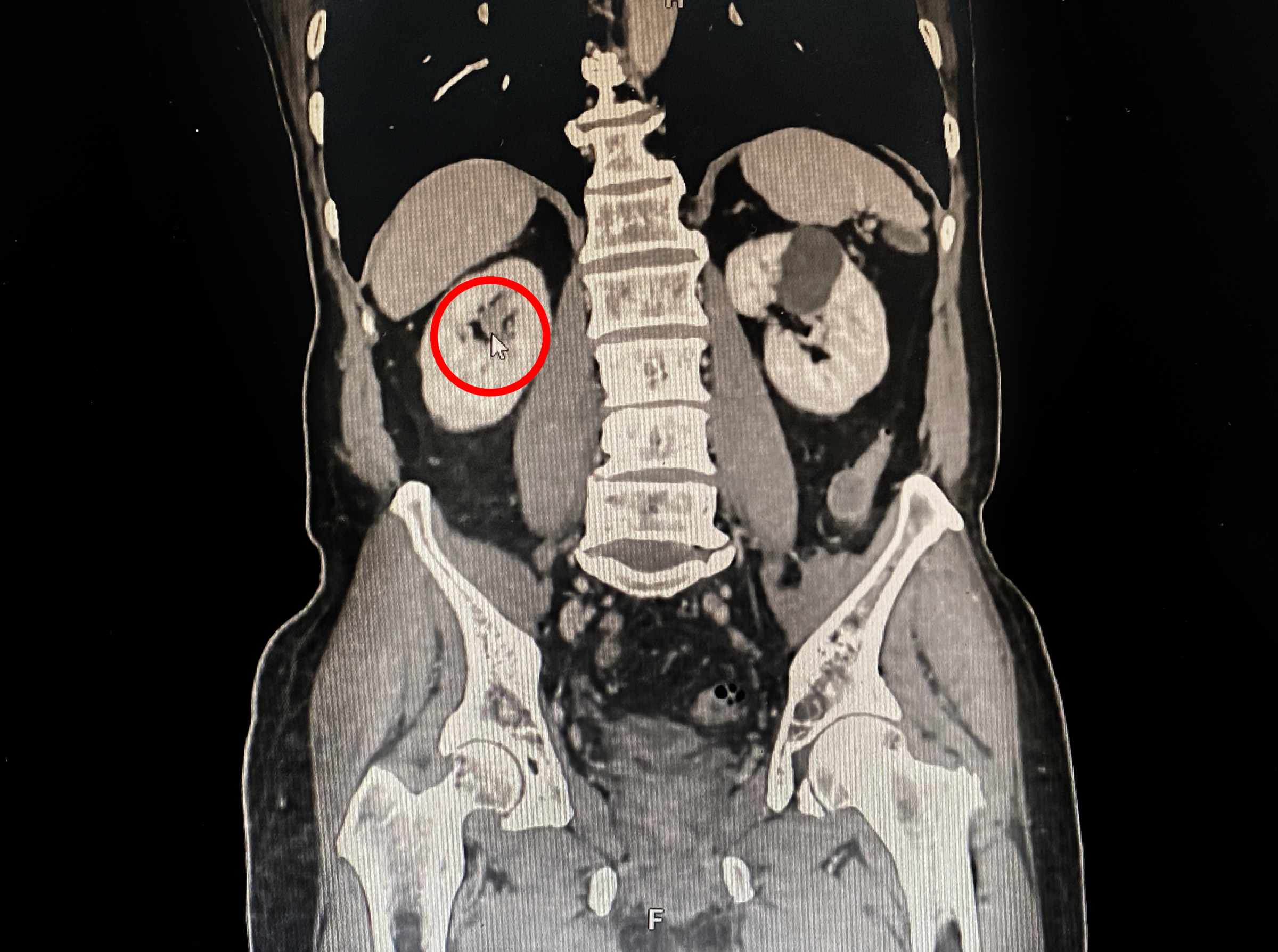 |
CT scan showing Mr. Khang's urothelial tumor in his right kidney. Photo: *Tam Anh General Hospital* |
Associate Professor, Doctor Vu Le Chuyen, Director of the Center for Urology, Nephrology, and Andrology, explained that unlike kidney cancer, which typically originates in the kidney's parenchyma cells, urothelial cancer begins in the epithelial cells of the urinary tract. These cells line the bladder, kidneys, and ureters. The cancer can spread to other organs and tissues.
In its early stages, the disease often has no noticeable symptoms. Some individuals, like Mr. Khang, may experience blood in their urine. As urothelial cancer cells invade, they can affect the entire urinary system, including the kidneys, ureters, and bladder. If the damage becomes extensive, the cancer can hinder the kidneys' ability to filter blood and remove toxins, leading to kidney failure. Therefore, the optimal treatment is surgical removal of the affected kidney, ureter, and part of the bladder.
Due to Mr. Khang's age, doctors opted for a minimally invasive robotic-assisted surgery using the Da Vinci Xi system. This approach avoided the large incision, blood loss, and physical strain associated with open surgery or traditional laparoscopy.
The Da Vinci Xi robot has 4 slender arms and a flexible camera that can be switched between the arms. After removing the right kidney, doctors could move down to remove the ureter and bladder cuff without making a new incision. The operating table can be positioned to suit the patient's position for different surgical stages and robot arm placements. This allowed the surgical team to perform the procedure seamlessly, from the kidney down to the bladder, without repositioning the patient.
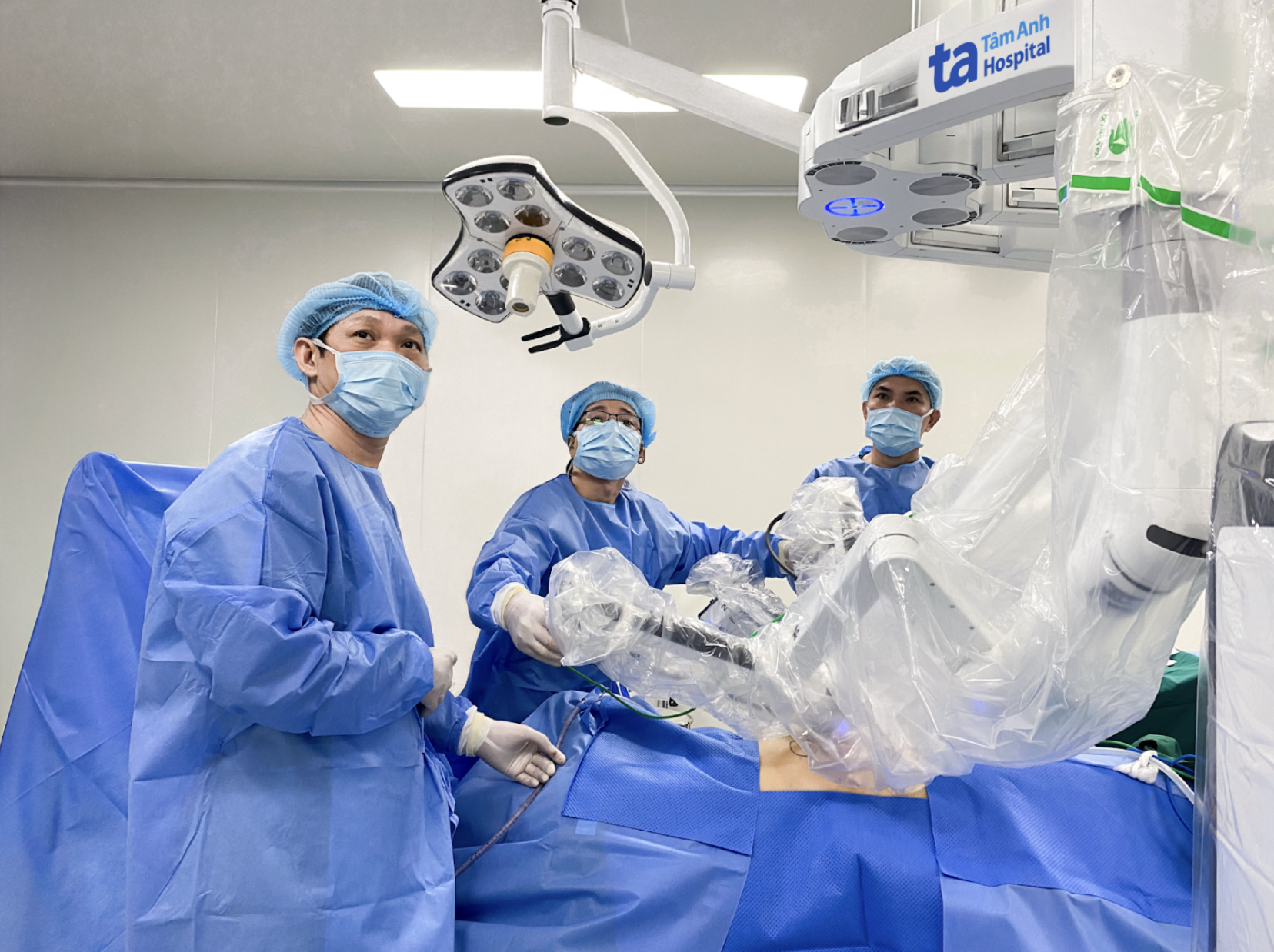 |
The surgical team with Associate Professor Chuyen removing Mr. Khang's urothelial tumor. Photo: *Tam Anh General Hospital* |
48 hours post-surgery, Mr. Khang experienced minimal pain and was able to walk, resume normal activities, and eat normally. According to Associate Professor Chuyen, the tumor had not metastasized, and the surgery successfully removed all cancerous tissue, eliminating the need for chemotherapy or radiation therapy. Mr. Khang's remaining kidney is stable and capable of performing the body's blood filtration and detoxification functions. He will require follow-up appointments every 3 months for the first year to monitor his health and check for recurrence.
Doctors advise individuals experiencing persistent back pain, fatigue, unexplained weight loss, painful urination, blood in the urine, or those with risk factors like smoking or frequent exposure to hazardous chemicals, to undergo regular health checkups. Early detection and treatment are crucial for effective cancer management.
Ha Thanh
*The patient's name has been changed.







